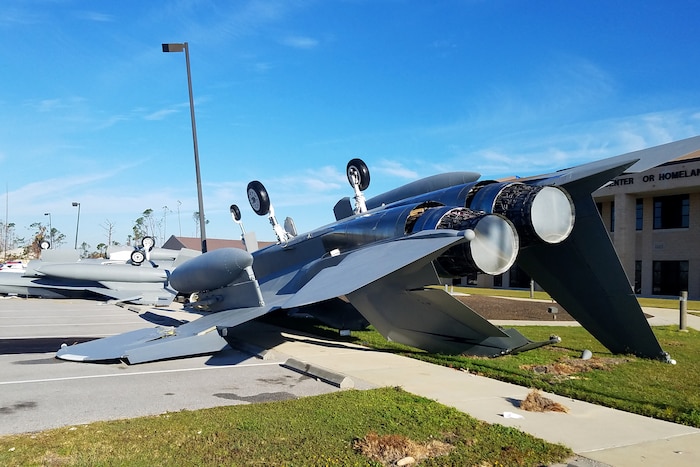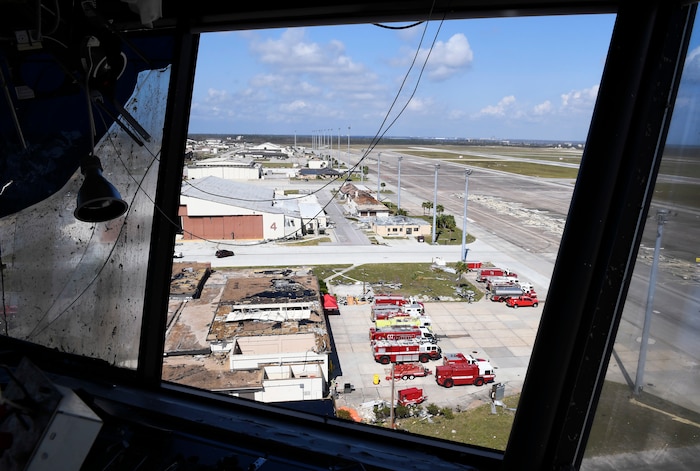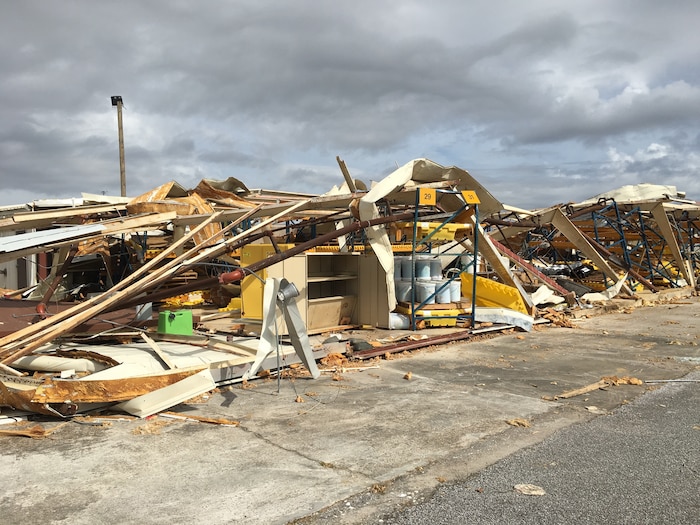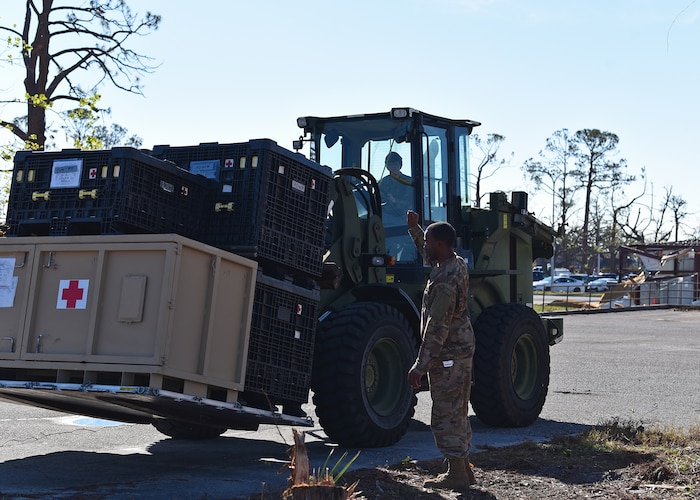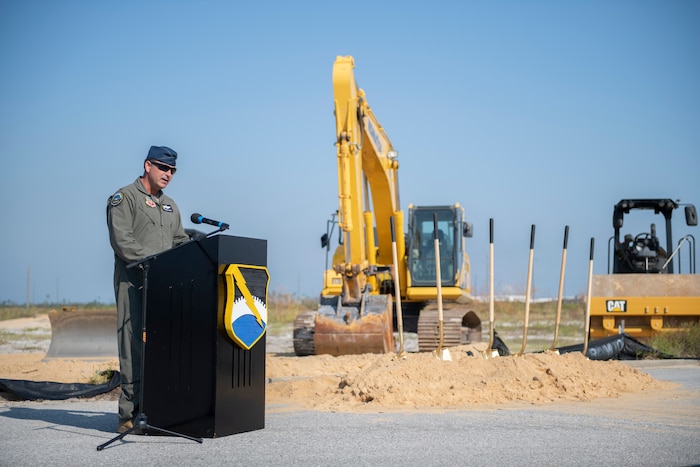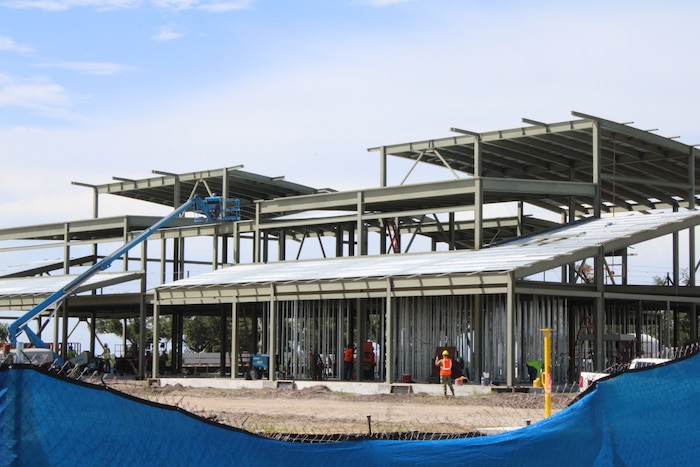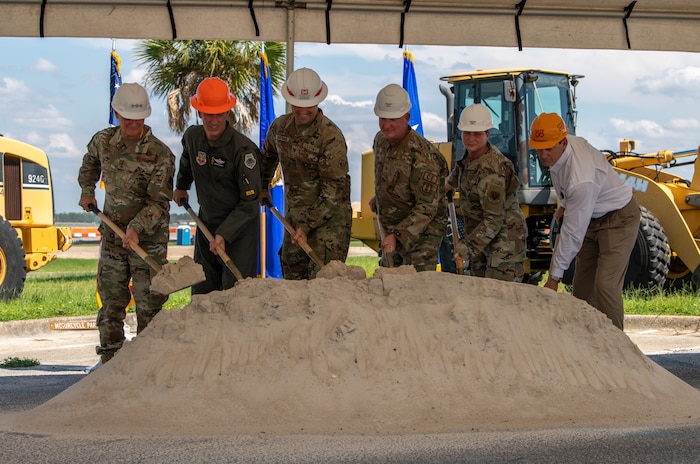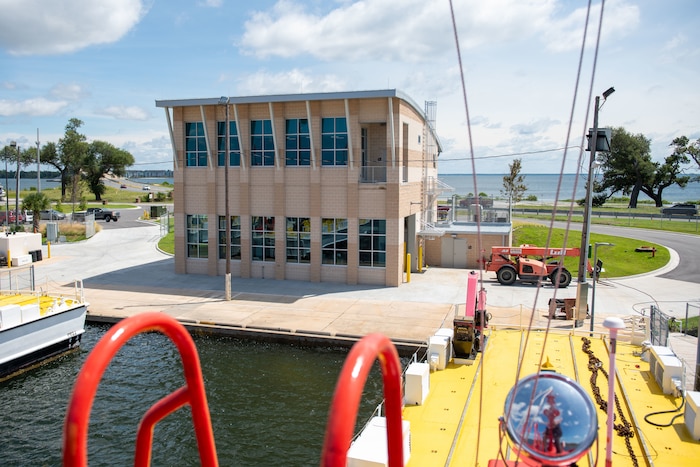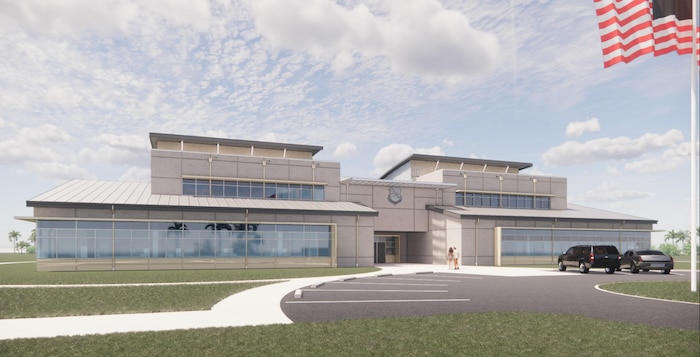Five years after Hurricane Michael, AFIMSC continues shaping Tyndall as Installation of Future
In the days after Hurricane Michael virtually leveled Tyndall AFB Oct. 10, 2018, the Department of the Air Force decided simply rebuilding the base wasn’t enough. Tyndall would become the “Installation of the Future,” and the Air Force Installation and Mission Support Center would lead the way.
“AFIMSC was there to support from the beginning, bringing expertise to start putting the pieces back together in order to build a base for the future,” said Maj. Gen. John Allen, AFIMSC commander. “I’m extremely proud of the progress and transformation at Tyndall. As members of that community, we were stunned by the devastation, but we also saw the potential for what we could accomplish for the Air Force, the community and our nation.”
AFIMSC has been a part of the recovery and rebuild since the early hours after the storm passed when a small team from the Air Force Civil Engineer Center’s Tyndall operating location restored HVAC and electrical services to mission-critical facilities that were vital to begin recovery efforts.
“While keeping those facilities operational, our team also assisted other AFCEC directorates with damage assessments for 70 buildings to include in a consolidated assessment report. This accelerated the process to receive funding to repair or demolish the 693 damaged buildings,” said Patrick Ross, CEMIRT HVAC manager.
Less than 24 hours after the 160-mph Category 5 hurricane-force winds turned the 29,000-acre installation into piles of rubble and debris, AFCEC executed a $293 million task order under the Air Force Contract Augmentation Program to start recovery efforts.
The contract supported two task forces: Task Force Phoenix, led by the AFIMSC vice commander, to assess usability of facilities and Task Force HARP, led by an AFIMSC Installation Support Directorate colonel, to help Airmen and families with housing and relocation. Many other AFIMSC teams also helped meet immediate disaster response needs.
In November 2018, the Air Force estimated the cost to rebuild Tyndall at $4.9 billion and presented proposals for reconstructing Tyndall from the ground up by December. AFIMSC stood up a program management office, now AFCEC’s Natural Disaster Recovery Division, to lead the extensive five-to-seven-year rebuild.
“When we were directed to rebuild Tyndall, senior leadership was very clear that we were not to rebuild the base as it was before,” said Col. Robert Bartlow, NDR Division chief. “We are building the Air Force’s model Installation of the future; the base the Air Force needs for the remainder of the 21st century.”
AFIMSC’s Resources Directorate stepped in to advocate and source vital operations and maintenance, and Facilities Sustainment, Restoration, and Modernization funding to supplement military construction.
“Those funds allow us to repair facilities not being replaced by MILCON and purchase the furniture, fixtures and equipment needed to operate,” said Mike Dwyer, NDR’s deputy division chief. “We would not be where we are right now if it weren’t for their assistance and tireless advocacy for funding. Over the past five years, we’ve gone from a disaster scene of destroyed buildings and rubble everywhere to the Installation of the Future rising out of the ground as we speak.”
Rebuilding began with the design of 44 MILCON projects, the majority of which were awarded in 2022. There are just three projects left to award. This year, significant construction progress is visible across the base since reaching peak construction with nearly 4,000 workers on site daily until 2025. Facilities are turned over to mission owners upon completion with a mass delivery of facilities expected in 2026.
The NDR is doing that by not only building facilities to be resilient to hurricane wind speeds, storm surge and anticipated water level rises, but also with technologies within the infrastructure to improve how the base is operated and maintained.
“We’ve explored opportunities to partner with organizations, industry and companies to decide what technologies to incorporate,” Bartlow said. “We will have multiple new applications within our systems for our Airmen to capitalize on.”
Some examples are the Digital Twin, an accurate real-time 3D digital model of Tyndall and the Installation Resilience Command and Control System to instantly access real-time data gathered on the base.
“We are also implementing gunshot detection sensors in selected facilities to notify our Defenders of an active shooter and the precise location to cut down on response time,” Dwyer said. “We are one of the first to do this in the Air Force.”
Another advancement under consideration through a partnership with privatized utilities and the Air Force Office of Energy Assurance is a microgrid that would be capable of powering Tyndall independently if the main power grid goes down again.
AFIMSC is putting the lessons of Hurricane Michael to work helping other installations recover from natural disasters of their own. When flooding engulfed nearly one third of Offutt AFB, Nebraska, in March 2019, AFIMSC stood up a project management office to manage the recovery and rebuild effort. AFIMSC also stood up a PMO at Andersen AFB, Guam, after Typhoon Mawar rolled over the island in May.

